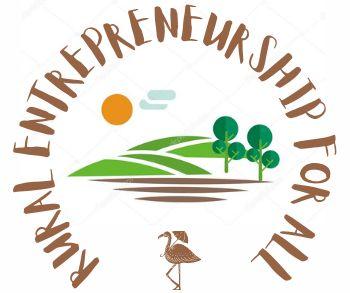How to use Canvas business model
Verona – Novembre 2022



Verona – Novembre 2022


A startup is a young company founded by one or more entrepreneurs in order to develop a unique product or service and bring it to market
• The Value Proposition is foundational to any business/product.
• It is the fundamental concept of the exchange of value between your business and your customer/clients.
• Generally, value is exchanged from a customer for money when a problem is solved or a pain is relieved for them by your business.











Customer Segmenting is the practice of dividing a customer base into groups of individuals that are similar in specific ways, such as age, gender, interests and spending habits.
a. Who are we solving the problem for?
b. Who are the people that will value my value proposition?
c. Are they another business?
d. If so, what are the characteristics of those businesses?
e. Or, are they other people?
f. Does my value proposition appeal to men/women or both?
g. Does it appeal to young adults aged 20 to 30 or teenagers?
h. What are the characteristics of the people who are looking for my value proposition?
a. Another thing to gauge and understand is your market size, and how many people there are in the Customer Segment. This will help you understand your market from a micro and macro perspective.
b. A great place to start understanding your customer is to create customer personas for each of your Customer Segments.

1. Okay, so we know our Value Proposition and have developed Personas to better understand our Customer Segments or ‘customers’, but what is the relationship we have with our customers?
2. Customer Relationships is defined as how a business interacts with its customers.
3. So, do you meet with them in person? Or over the phone? Or is your business predominantly run online so the relationship will be online too?
a. In person (one-to-one)
b. Third party contractors
c. Online
d. Events (one-to-many)
e. Phone…

a. A really helpful step is to create a User Journey Map of your customers as they interact with your business. This helps clarify the points of engagement between you and your customer and the modes used to relate to your customers.
b. This will also help you start to define your operations as a business and also help you identify opportunities for automation.
1. Channels are defined as the avenues through which your customer comes into contact with your business and becomes part of your sales cycle.
2. This is generally covered under the marketing plan for your business.

a. Social media,email marketing,)Networking,SEM (Search Engine Marketing),SEO (Search Engine Optimisation),Viral marketing,Targeting blogs,Sales and promotion,,Affiliates
b. Existing platforms,PR,Social advertising,Trade showsOffline advertising (billboards, TV, radio)
1. Key Partners are a list of other external companies/suppliers/parties you may need to achieve your key activities and deliver value to the customer.
2. This moves into the realm of ‘if my business cannot achieve the value proposition alone, who else do I need to rely on to do it?’
(An example of this is ‘if I sell groceries to customers, I may need a local baker to supply fresh bread to my store’)
3. They are a key partner to achieve the value my business promises to the customer.
1. What activities does the business undertake in achieving the value proposition for the customer?
2. What is the resource used?
3. Time?
4. Expertise?
5. Distribution of product?
6. Technical development?
7. Strategy?
8. Offer resources (human/physical)?
9. What actions does it take you and/or your staff to achieve value exchange?
• How much does it cost to achieve my businesses key activities?
• What are the cost of my key resources and key partnerships?
• How much does it cost to achieve the value proposition for my customers/users?
• Are there additional costs to running a business?
• Legal?
• Insurance?
• What is the cost of my business?
• It is important also to place a monetary value on your time as a cost.
• How much would it cost you to hire you?
• What is the opportunity cost of running your business?



1. It is also important to understand pricing your business accordingly to pain of purchase in exchange for the pain of solving the problem for your customer.
2. There are many different revenue models here:
• Pay per product (pay per view), Fee for service,Fixed rate,Subscription,Dividends,Referral feeds,Freemium,Equity gain

1. Your business cost structure is defined as the monetary cost of operating as a business.
2. How much does it cost to achieve my businesses key activities?
3. What are the cost of my key resources and key partnerships?
4. How much does it cost to achieve the value proposition for my customers/users?
5. Are there additional costs to running a business?
6. Legal?
7. Insurance?
8. What is the cost of my business?
9. It is important also to place a monetary value on your time as a cost.
10. How much would it cost you to hire you?
11. What is the opportunity cost of running your business?

Revenue Streams are defined as the way by which your business converts your Value Proposition or solution to the customer’s problem into financial gain.
Your business cost structure is defined as the monetary cost of operating as a business.